Vietnam’s Back on Track
Author’s Note: We had intended to launch the new book, “A Little Traveling Music” this morning. Despite anguished conversations with Production in Bangalore, India, we did not accomplish publication today. Instead, we offer a segment of the new book that is a newer compilation derived from another project in motion, which is the free-wheeling memoirs of a group of distinguished Shipmates. This one was of note related to “Traveling Music,” since part is derived from my only opportunity to meet the President of the Socialist Republic of Vietnam and the Mayor of the town that used to be known as Saigon, 1995.
– Vic
Vietnam’s Back on Track
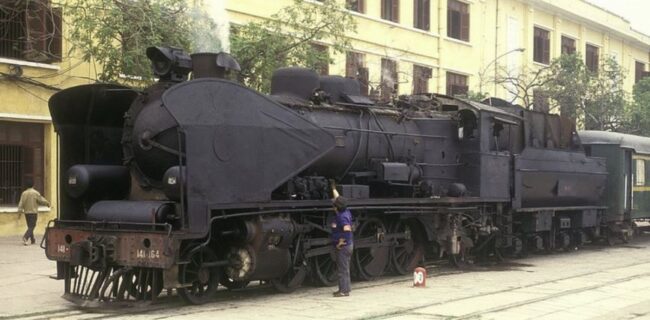
(Wafaifo & Revolution Express Train. Photo via CNN Newsource)
The Production Meeting was agog on the impending developments from the Trump trial up in New York. Apparently there will be an announcement, already written, from the White House when it will be revealed. There has already been a leak about the new campaign nickname that will join “crooked’ for one side and “convicted felon” on the other it is great fun and made, according to polling at the table on The patio, it would be a great time to get out of the country and not think too hard about it.
Ed McD said: “Vietnam’s vintage 1960s steam locomotives are back on the rails. Could it be a reason to revisit that nation?”
Mules responded: “Thanks Ed, that is a wowser! Steam trains will be back up and running in Vietnam!”
Vic scowled. “They weren’t the last time I was there, but that was for the 20th anniversary of the fall of Saigon.” He fished in his briefcase and produced an old photo. “This is me introducing myself to the President of the Socialist Republic of Vietnam, former General Le duc Ahn.”
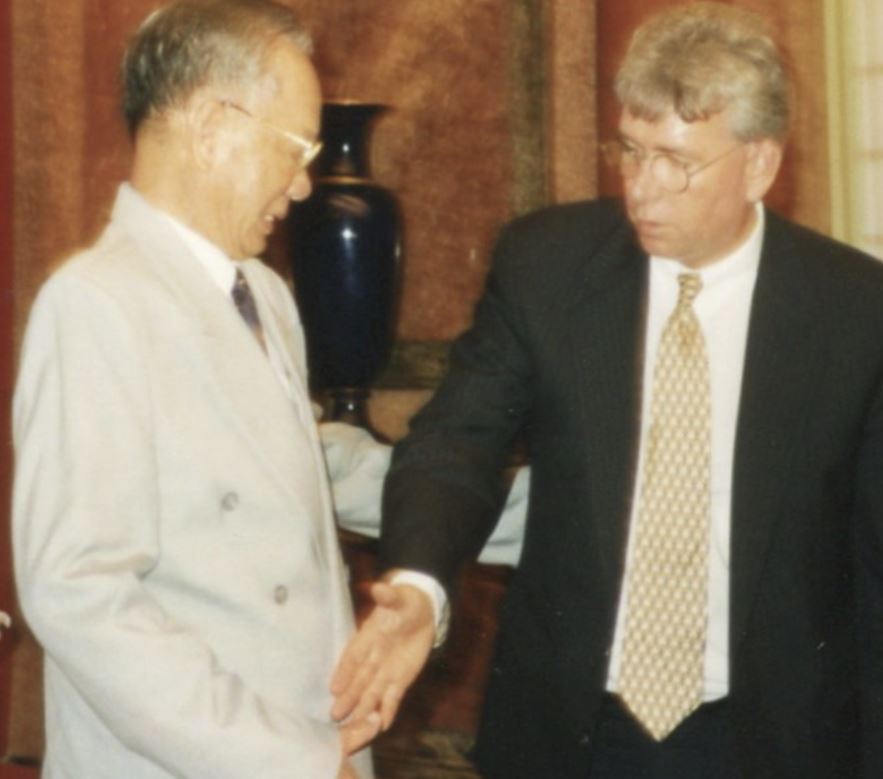
“It was a great visit. We escorted Congressman Bill Richardson, later Secretary and Governor, who was determined to normalize relations with the Vietnamese after they successfully held off the Chinese. Hillary sent us off. Bill’s special advisor Calvin enjoyed a stop at the monument marking the spot where former Senator John McCain was shot down in Hanoi. That is the Senator, sculpted as a Navy pilot to Calvin’s left.”
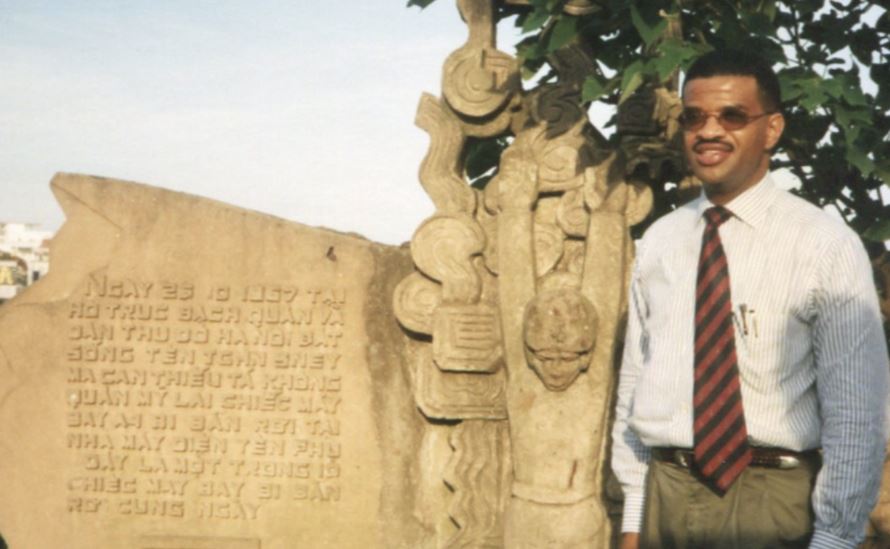
Vince looked between the images on the glowing tablet in the middle of the table. “I was just a squadron Air Intelligence beanbag then, but the crews said it was an attack pilot’s dream. Hit a steam engine, get a great secondary from the boiler blow, then any additional hits on the cars. Distinuished Flying Cross for sure! Dunno if it ever happened …. but they could dream.”
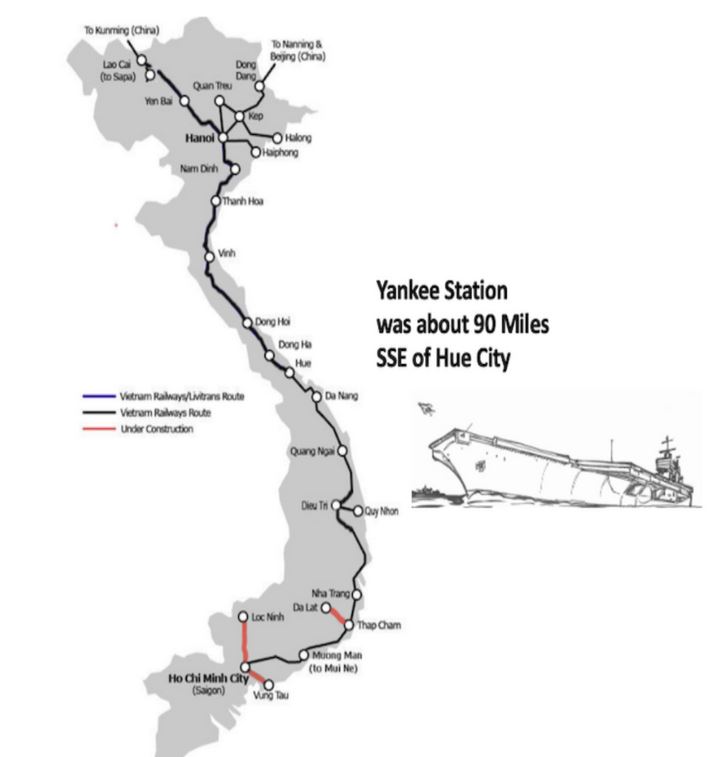
Mules said: “The rail network is 1,300 miles long and narrow. The French colonialists thought the narrow topography of Vietnam lent itself nicely to RR transport. They built out chunks of 1-meter narrow gauge over much of it, partly using some German engines and bridging materials. A great effort to patch things up after the war.”
Jim was a former Fleet Intelligence Center guy, responsible in Hawaii for target planning by analyzing the SE Asia ‘Road, Rail and Waterway’ transportation networks. He scowled. “After the wars, the rail system was further developed. This bit should be interesting to watch.”
Splash sat up from one of his periodic lapses at the table. “I had the late flatcreen watch on MSM messaging last night, Jessie Yeung from CNN had a nice pitch on it.”
We were pleased we did not have to watch it in real time. Joe said: “Train enthusiasts and history buffs alike will soon have a new Southeast Asian destination to visit, as Vietnam prepares to unveil a pair of revamped vintage steam locomotives from the 1960s. They have a third, but it may just be a parts wagon like the ‘75 Oldsmobile the Chairman has parked out back.”

(2-8-2 Mikado engine. Archive photo Sebastian Willnow)
Joe produced a picture of a steaming engine. ”This is one of the two now resurrected. They date from French Indochinese days. Funny old abbreviation, now that we call the whole region the Indo-Pacific.”
“Wafaifo Optimisers is the outfit that manages the project. Their engines are a version of the very popular U.S. “Mikado” model 2-8-2 locomotive. We built it here starting in the 1880s. Production run was over 2,000 engines. They were popular built under license all over the world. The “Mikado” name come from the early, large purchase by the Japanese. That naturally changed after 1941. Then they were re-designated as “MacArthurs” or “Mikes.”
Laughter ensued from those who had planned or flown missions against the North from Yankee Station.
“The 2-8-2 notation refers to the wheel arrangement o the engine, 2 ‘pilot wheels’ in the front, followed by 8 main drivers and 2 additional wheels on a trailing ‘truck.’ The Fench only counted one side in the model they built, so their name was different as usual. The Vietnamese have been slowly restored them to working condition using parts from the third now derelict engine crafted by the last living steam engineers. Now, they are ready to start a whole new Orient Express.”
“First trips expected late this year or early in 2025.”
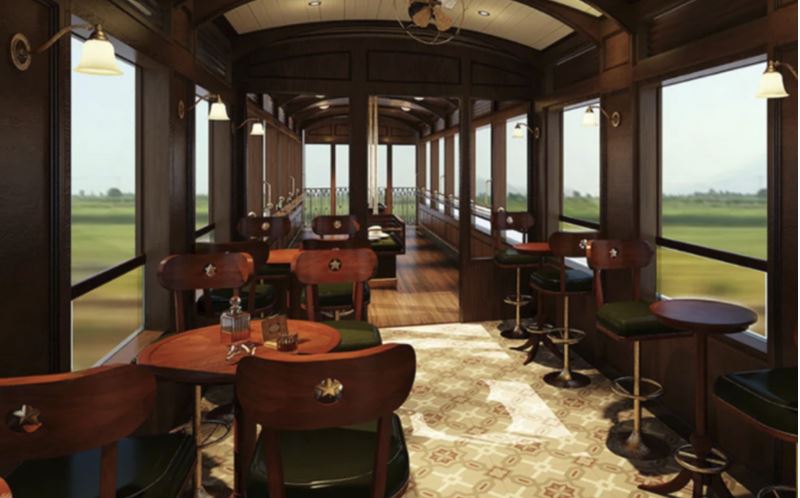
Vic smiled. “Looks luxurious! Wish we could have taken that train to Mai Sot on the Burmese border rather than the Embassy C-12 airplane. I think the drink service would have been better!”
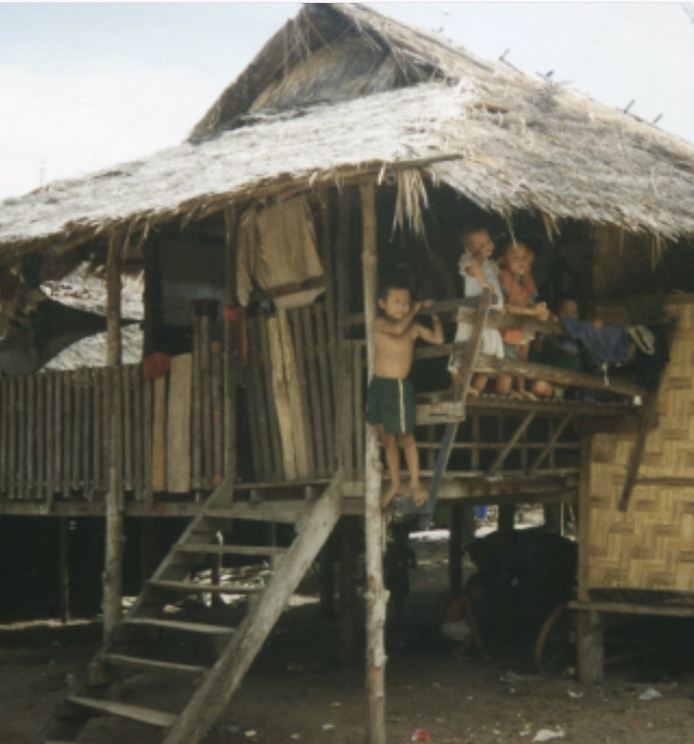
(Mai Sot Village street scene, 1995. Photo Socotra)
“We commissioned the Ticonderosa-class cruiser USS Hué City (CG-66) to recall our involvement in the town. There are some interesting stories about how that ship has done since 1987. In Vietnam, the new trains will pass through, each one hauling two refurbished passenger cars with a kitchen and baggage compartment. Passengers will dine on mahogany tables while seated on chairs with gold colonial accents and decorative tiling. Great views out the windows of things like the coastal mountains of Hai Van above the South China Sea.”
“And the Mikado name is appropriate, since the project started with a Japanese-funded war reparations effort in 2005.”
“It’s not just the decor that quotes Vietnam’s past. It permits tourists to jump over the American part of the war since that will be most of the tourists while all those who fought there can still travel. It is a nice and pleasant place now that there is no fighting.”
“Yeah. Each station along the route will be fitted with an appropriately themed restaurant. The one in Hue will have an imperial theme for the Socialist paradise, matching the old royal history. The victory over the Japanese, French, Americans and Chinese will be featured in a socialist-themed joint in Lang Co.”
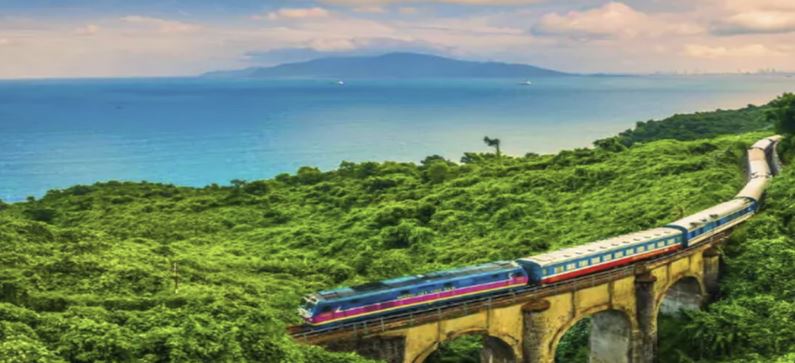
(Image courtesy TripAdvisor)
The war finally ended in 1975 with the fall of Saigon. It is now Ho Chi Minh City and we got a chance to meet the Mayor when we visited.
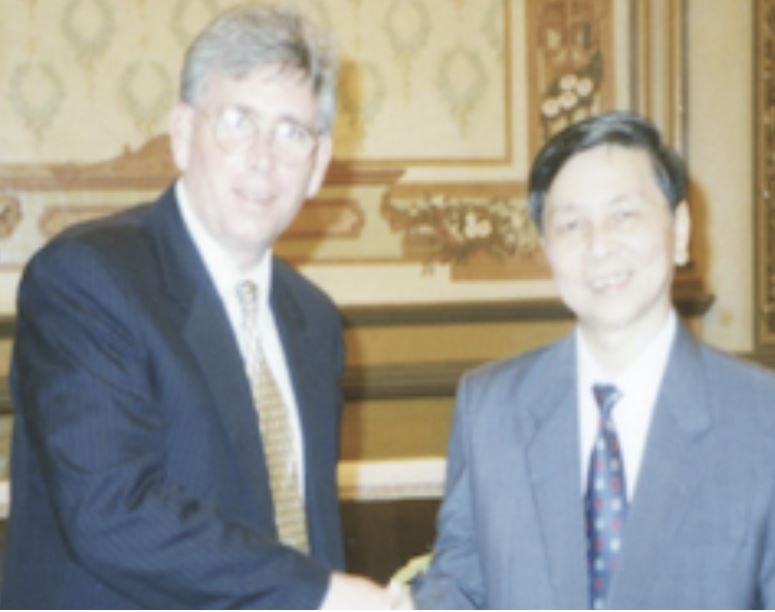
(Mayor Truong Tan Sang, 1995. Photo Socotra).
Truong Tan Sang seemed like a nice guy, and despite the new name for the former capital of the Republic of Vietnam, was eager to help us sort out the MIA issues that had impeded delopment of peacetime relations. Today’s rail tourists will not be required to do so. At the time, he said the Vietnamese couldn’t understand why the missing American (MIA) issue continued to stand between our countries.
In 1995, we were not touring by rail, and not the first Yanks to be wandering around after the war ended. Congressman Richardson talked to the small team of US Army forensic experts that were doing the digging in the field, and took back their positive reports to Washington. Then, Peace was declared, celebrated briefly and the MIA issue filed away. And people started to think about tourism. And trains.
Vince was perched between worlds. “It’s important not to forget. There were over with 1.3 million military deaths for all the countries involved in the string of conflicts. Plus another million total civilian deaths. We should remember.”
“Amen,” sighed Jim. He slid his tablet across the picnic table, two images glowing. One displayed ‘now,’ and the one below it the same place in B&W in a time only some of us recall: “1968.”
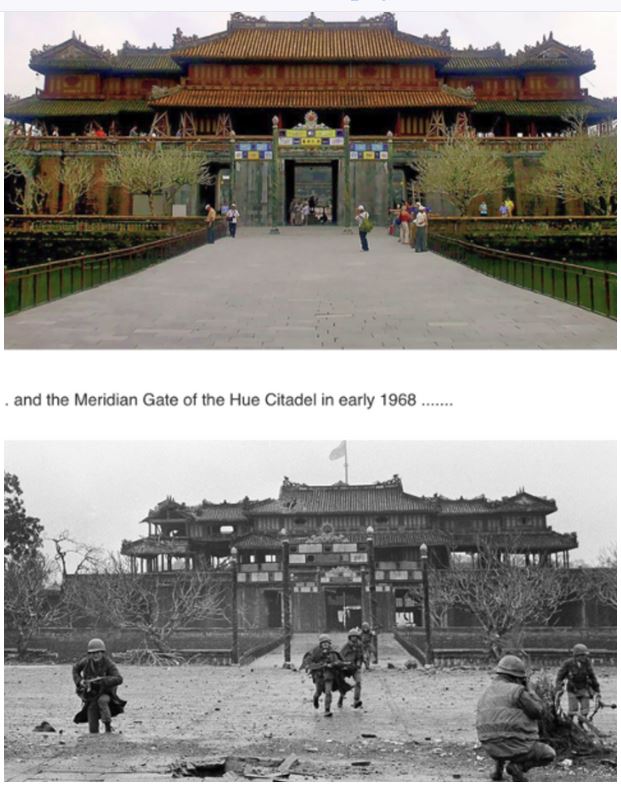
Copyright 2024 Vic Socotra
Www.vicsocotra.com
